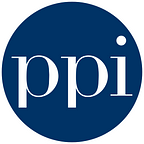What is the future of flexible federalism?
It’s an old Washington trope that the party out of power remembers their appreciation for federalism.
by Dane Stangler, Director of Policy Innovation| Progressive Policy Institute
Both Republicans and Democrats praise states as “laboratories of democracy” when they don’t hold the White House or Congress. Once in power in Washington, they rediscover their affinity for centralization and federal mandates.
Now, though, in an era of New Localism and widespread local and regional efforts to address persistent national challenges, a renewed approach to flexible federalism is needed. The next and future presidents need a framework for flexible federalism that permits them to encourage local innovation, empower regional leaders, and help share and spread lessons.
This doesn’t mean that every policy issue needs to be devolved to the local level: mayors themselves say that health care and the environment are best addressed at the state level. A framework for flexible federalism, moreover, is not just for the federal government. State preemption has become a major flashpoint in several places: mayors say they have diminishing autonomy from their state governments.
So, the president can’t do it all in terms of opening up more space for local innovation. But perhaps the federal government can lead the way, setting an example for the states. What might a framework for flexible federalism look like and how might it be applied?
Involve states and localities
Even in areas where the federal government is, and will remain, preeminent, state and local government can be more involved in execution. Over the past decade, in fact, states and cities have taken hundreds of actions on immigration — in some cases, they’ve been deputized by the federal government.
In our debates over immigration, the Canadian system is sometimes cited as a model, particularly the use of points scoring to evaluate prospective new arrivals. In his recently announced immigration proposal, President Trump wants to use a points system to orient the American immigration system more toward merit and away from family unification. Yet, as PPI will explore in forthcoming work, Canada has made major modifications to its points system (ironically, adopting some elements of American policy). Part of that modification has been the introduction of the Provincial Nominee Program. This involves local input from provincial governments and employers about regional needs and skill shortages.
The federal government can also work more closely with — and help enhance the effectiveness of — city policy networks.
Leverage existing assets
In many areas, the federal government provides funding and relies, to varying degrees, on state and local implementation. Yet there are other assets that could be leveraged, too. The federal government is enormous, employing just over 2 million civilian employees, plus another few million contract and grant workers, active-duty military, and postal service employees. Much of this workforce, especially active-duty military, is dispersed across the country, and the federal government maintains outpost locations everywhere.
Yet executive branch agencies remain clustered in Washington: what if they were likewise distributed throughout the country?
This general notion has been floated before, and the Trump administration has said it intends to move the Economic Research Service and National Institute of Food and Agriculture — both part of the Department of Agriculture — to somewhere outside Washington. This is not as crazy as it sounds: several other countries, including Norway and Denmark, have done it. The Washington, DC, region has, over the last two decades, become one of the country’s most economically dynamic areas in large because of federal spending on health and national security.
Moving federal agencies may not be the right direction; even if it is, the Trump administration’s proposed starting points might be wrong. But the larger point is that, in working to renew flexible federalism, the federal government has considerable assets at its disposal to leverage to the benefit of local and regional innovation.
Encourage innovation and experimentation
The federal government can and should explicitly bless local attempts at innovation, even where they prove ineffective — and encourage states to do the same.
Soon, for example, Congress will take up reauthorization of the Workforce Innovation and Opportunity Act (WIOA), which encouraged state-to-state experimentation in workforce development. Public-private partnerships across the country are testing different approaches to career readiness and job training. Reauthorization provides a prime opportunity to encourage even more local innovation while handing more authority over job training centers to local and regional partners. There continue to be question marks about the effectiveness (and cost) of federal job training programs. A dedicated attempt to learn from local partnerships and apply lessons learned to the federal side would enable local governments to take the lead.
Flexible yet standardized
In many areas, the federal government already provides block grant funding, allowing local governments to decide how programs are designed and implemented. Yet, as we noted in the previous post, cities and counties still struggle with burdensome reporting, restrictive rules, and unfunded mandates. Greater flexibility should be the rule: local government should be allowed to use federal funding across different policy areas. The defined lines between policy “buckets” should not operate as hermetic seals that prevent needed coordination between, for example, law enforcement and health services.
At the same time, the federal government can further encourage data sharing and standardization across state and local government and private partners. Already, a few parts of the federal government participate in the Coleridge Initiative to build an integrated data infrastructure. Something like this would provide a turbo boost to evidence policymaking and help bring federal, state, and local government into closer partnership. This should be a priority in a new administration.
***
The specific examples discussed above are merely that: examples. Renewing flexible federalism should perhaps start in other areas. But any approach must start with a framework with principles like those proposed here. This is something PPI will be working on over the next two years.
